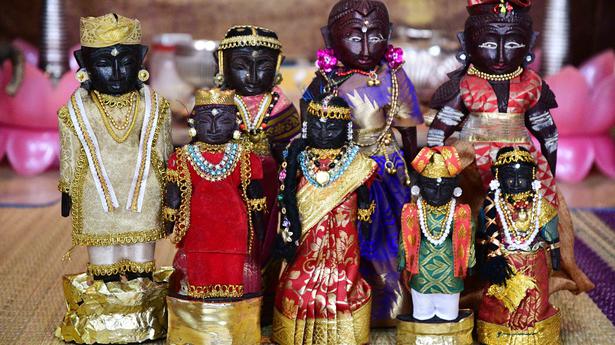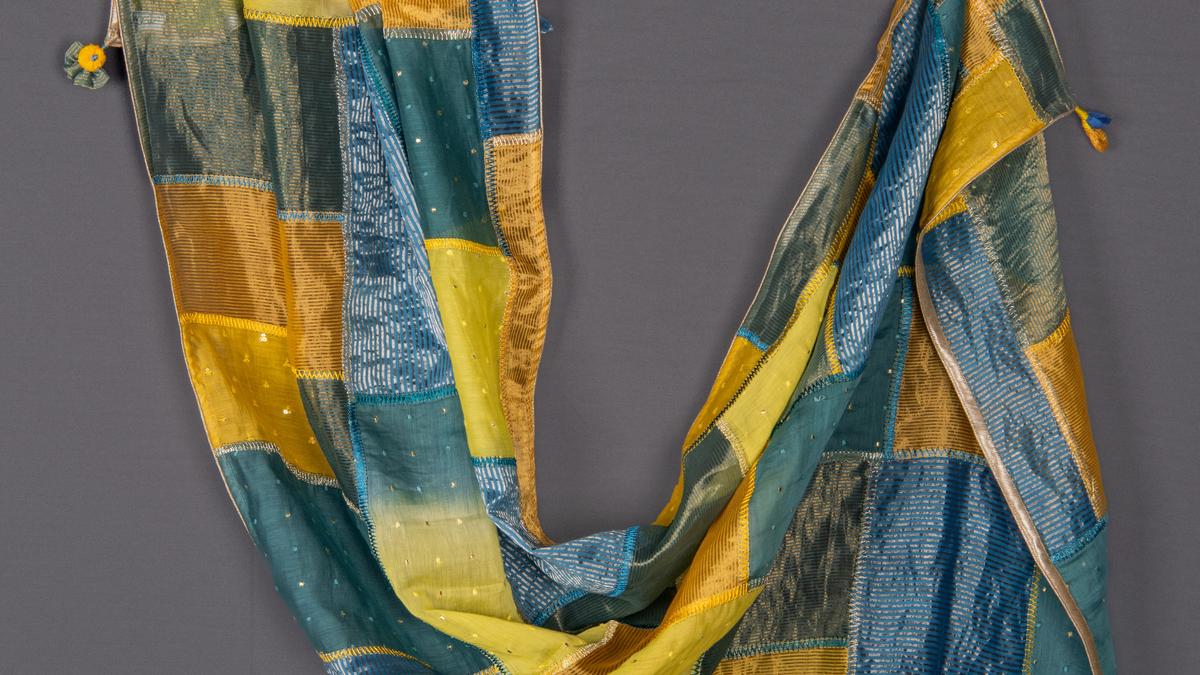As Navaratri concludes, we track down the prized dolls, which are passed down through generations, and always stored as a couple
As Navaratri concludes, we track down the prized dolls, which are passed down through generations, and always stored as a couple
A doll that is older than its owner, and one which will probably outlive her. Marapachi, with their chiseled features and rich mahogany colour, are full of mystique. Owning them is a huge responsibility — they come with a set of rules for usage and storage. The first one being: never separate the couple.
“We have to bring him close to her,” Rama Venkat tells us as we arrange her marapachi collection for a photograph. “They cannot be away from each other.” The dolls, made of red sanders, are a must in every golu. Ask anyone who owns these dolls, and they will share the age of their marapachi with pride: for most of them are several decades old.
S Gurumurthy owns marapachi dolls that are over 200 years old
| Photo Credit: Siva Saravanan S
Chitra Kannan owns two pairs: “One is mine, which is 30 years old, the other is my mother’s, which must be over 70 years old,” she tells us, pointing out the difference in features between the two. “My mother’s dolls have much better features,” she says. Chitra inherited her mother’s dolls. “She bought me a new pair when I got married, as is the tradition,” she explains, adding that her mother bought them from a shop near Meenakshi Amman temple in Madurai.
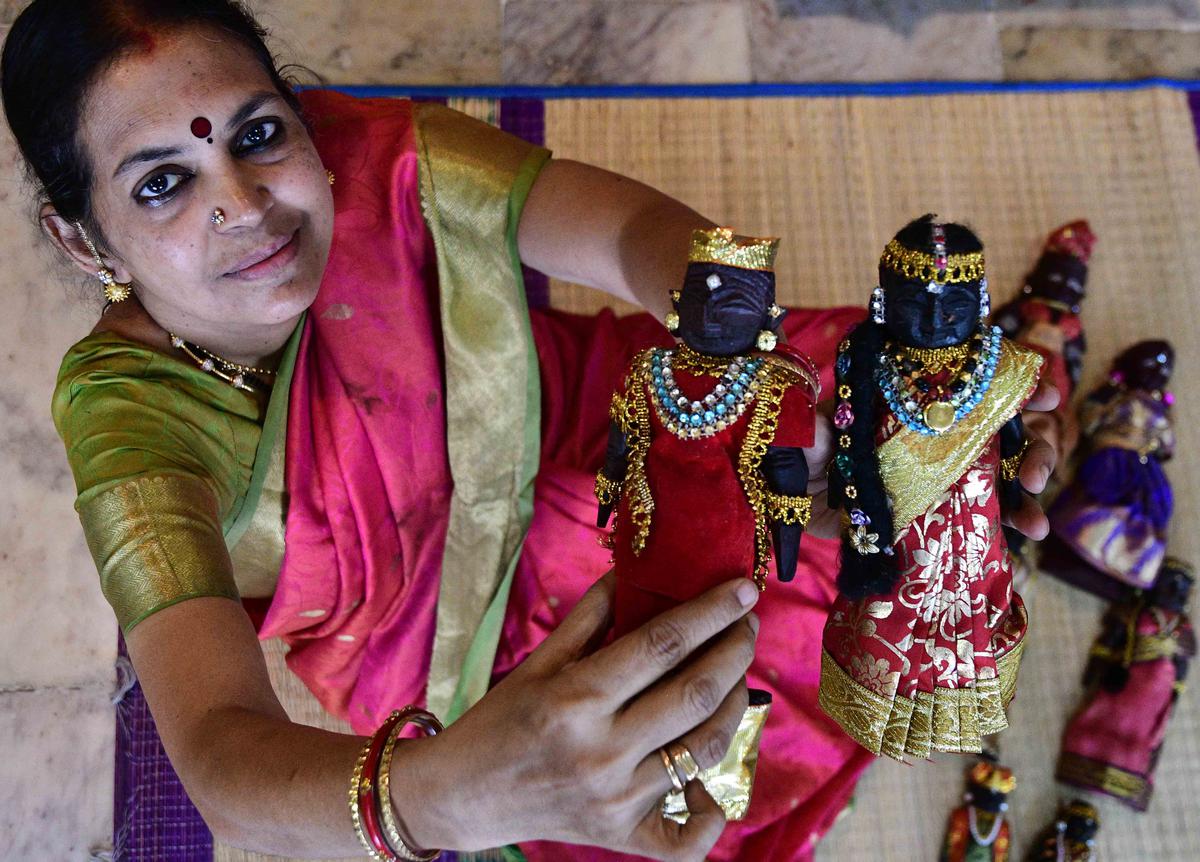
Coimbatore-based Rama Venkat with her collection of marapachi dolls
| Photo Credit: Siva Saravanan S
Bharathi Santhanam’s marapachi couple has a son and daughter dolls next to them, which is quite rare. “I made them a family,” she smiles, adding that the little dolls are in fact another couple. Her dolls are about 50 years old. “My mother got them at Tirupathi when she happened to go on a pilgrimage,” she recalls. The couple are dressed in costumes fashioned out of glitter paper, that Bharathi designed many years ago.
There is a reason why the dolls are gifted by mother to daughter. “They signify union and togetherness,” says 56-year-old Chitra. Which is why when she brings them out from their storage space every year during Navaratri, she does so with prayerful attention.
Long before the Government’s ban on felling of red sanders, marapachi dolls were not just confined to the forms of man and woman. According to M Sridhar, Coimbatore-based antiquarian and founder of Indian Antique Quest, a platform that sources and sells antiques, there were deities as well as king and queen marapachi dolls in the past.
“They were primarily made at Tirupathi in Andhra Pradesh owing to the availability of red sanders in the region,” he says, adding: “Red sanders was used because the wood has medicinal value. It is believed to have digestive as well as healing properties.”
Sridhar explains how a block of the wood would be kept in the kitchen to be rubbed in the mortar with water and used as a paste on cuts and rashes when in need. “The dolls were given as teethers to children of the household as well,” he says, adding that some couples dressed up their marapachi in the exact miniature versions of their wedding outfit. “This way, they would immortalise their looks on their wedding day at a time cameras were not easy to come by,” says Sridhar.
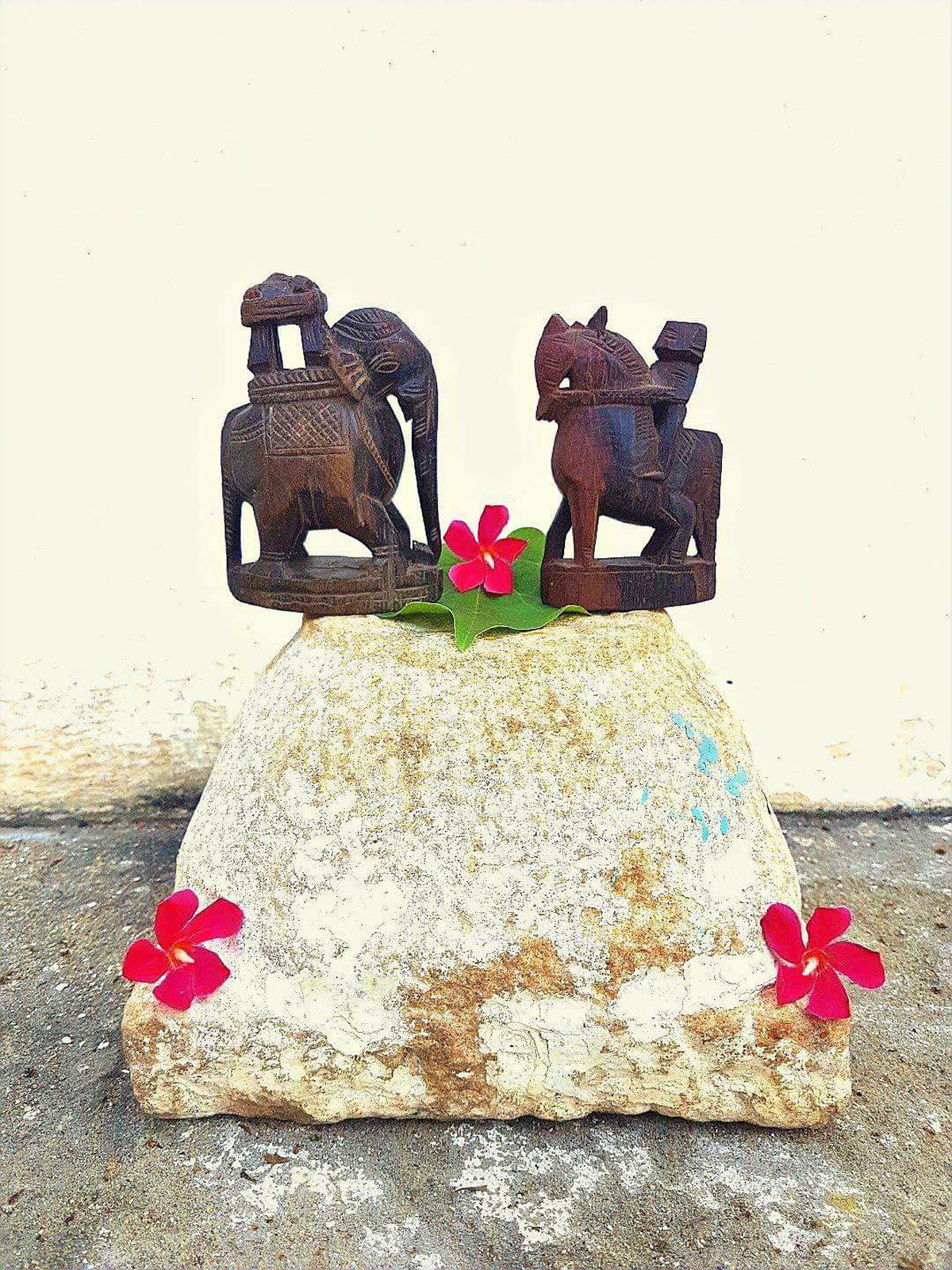
The dolls were given as teethers to children of the household
| Photo Credit: Special arrangement
The couple dolls were in fact together even before they were carved. Sridhar explains: “They are made from the same block of wood. If placed next to each other, one can notice how the grains and textures run into each other as one.” He owns a 120-year-old pair and recalls his grandmother’s strict instructions on how to put them away after being displayed. “‘You tie them with cloth with the dolls facing each other, and never their backs to one another’, she would say,” he says laughing: “And she would ask us to cover their ears well since they probably listen to every conversation at home.”
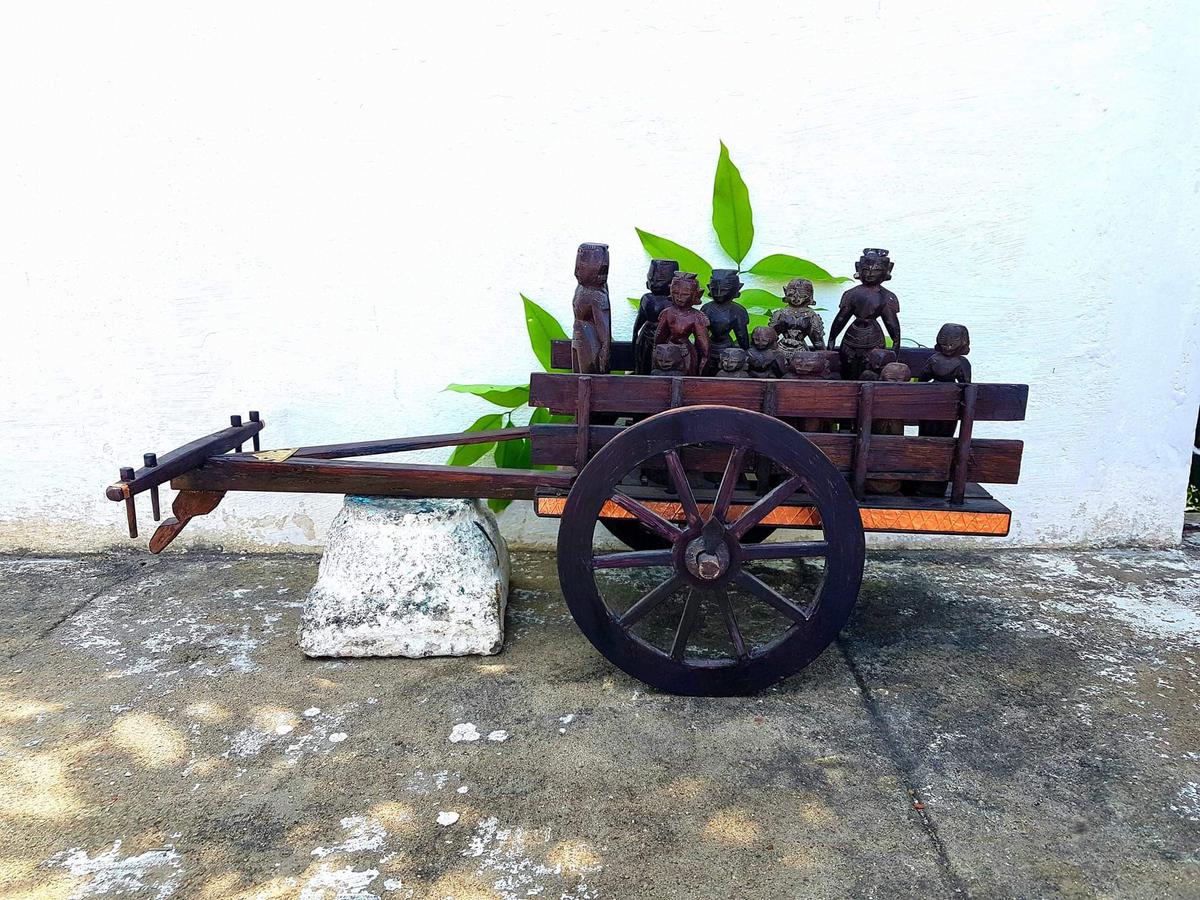
The couple dolls are made from the same block of wood
| Photo Credit: Special arrangement
History and Indology buff S Gurumurthy owns a two-feet tall couple, that is 100 years old. The 64-year-old also owns several marapachi treasures that are 200 to 300 years old. “They belonged to my great grandfather,” he says. Rama Venkat has four pairs of the dolls, one of which she inherited from her mother-in-law, that is 150 years old.
So, which among these is the most beautiful marapachi couple? It is hard to say, for these dolls are very personal, each carry precious memories. If I were to pick one, it would be mine. They may not hold any antique value, but were a gift from someone special. I chose them from a tiny shop outside Parthasarathy temple, Triplicane, eight years ago.


